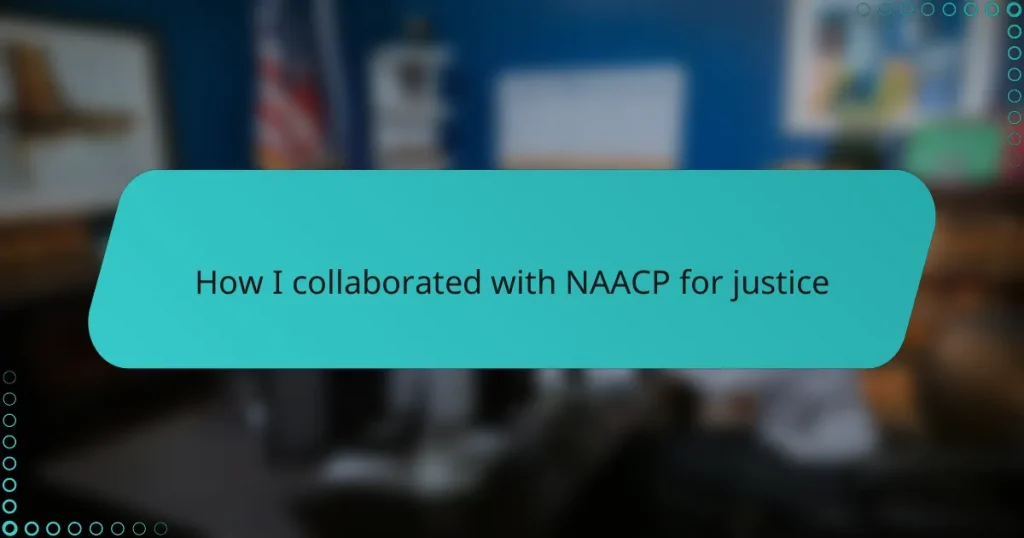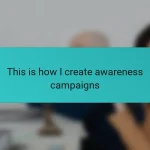Key takeaways
- Legal advocacy requires a balance of empathy, strategic thinking, and persistence to effectively support marginalized voices.
- The NAACP’s mission combines grassroots activism with legal strategies, emphasizing the importance of community engagement for meaningful change.
- Successful collaboration involves open communication, clearly defined roles, and flexibility to adapt to challenges while maintaining a unified vision.
- Building trust and aligning values early on are essential for establishing impactful partnerships in advocacy work.
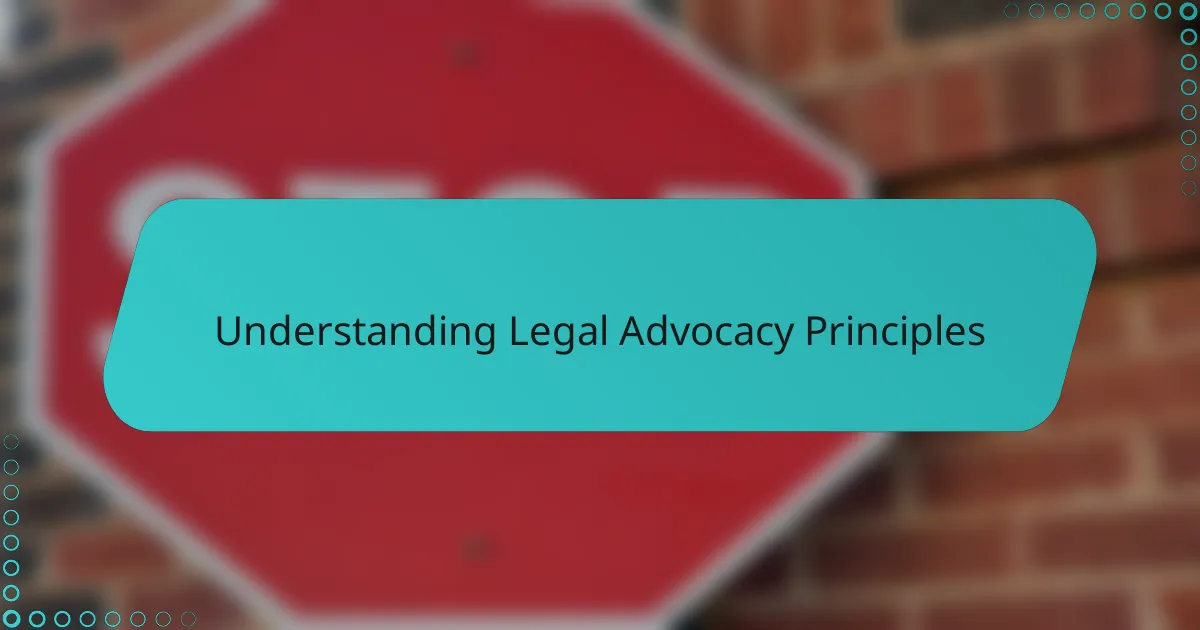
Understanding Legal Advocacy Principles
Legal advocacy, as I’ve come to understand it, is more than just knowing laws; it’s about passionately standing up for those whose voices often go unheard. Have you ever felt the frustration of seeing injustice but not knowing how to effectively challenge it? That’s where advocacy steps in—it transforms frustration into purposeful action.
One principle that struck me deeply is the importance of empathy combined with strategic thinking. You can master legal jargon, but without genuine concern for the people affected, your efforts risk feeling hollow. I remember a moment when listening intently to a community member’s story illuminated how crucial it is to balance heart and mind in legal battles.
Lastly, persistence is a lifeline in advocacy. The path to justice is rarely straightforward or quick. I often remind myself that change, even incremental, is progress worth fighting for. So, when faced with setbacks, I ask: how can this challenge sharpen my resolve rather than diminish it? This mindset has been essential in my collaboration with the NAACP and beyond.
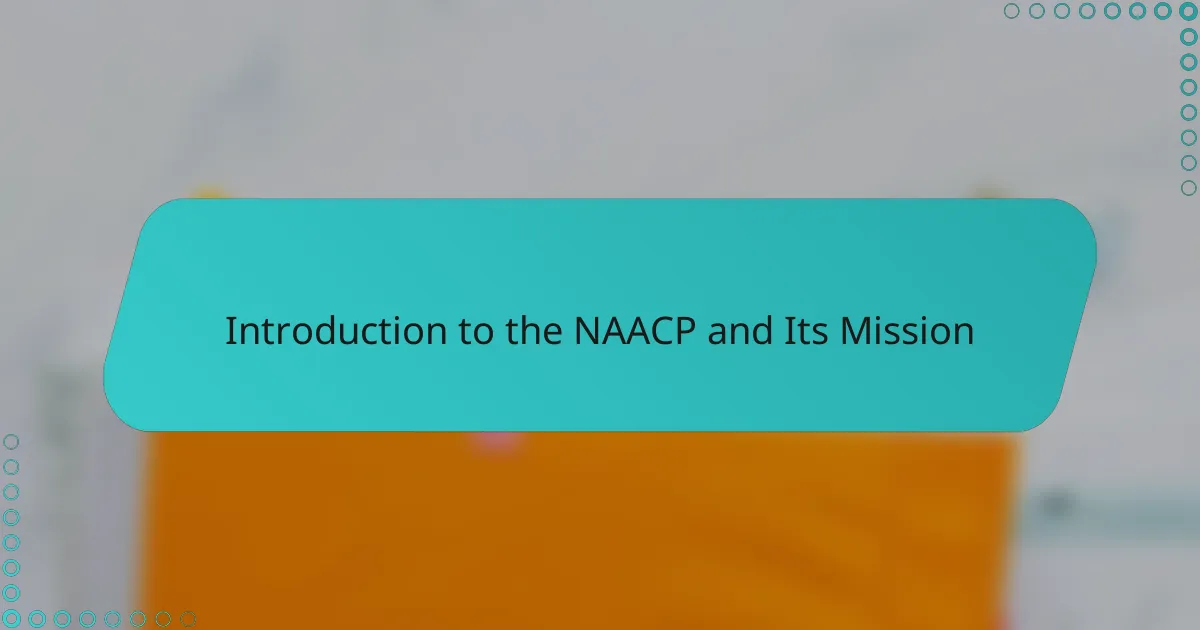
Introduction to the NAACP and Its Mission
When I first delved into the work of the NAACP, I was struck by their unwavering dedication to securing equal rights for all, especially in the face of systemic injustice. Have you ever wondered how an organization sustains its mission over more than a century? For me, understanding that the NAACP’s core is about fighting discrimination through legal advocacy truly resonated.
Their mission goes beyond fighting individual cases; it’s about transforming society by challenging policies and structures that perpetuate inequality. I realized that their work aligns perfectly with the principles I value—empathy, persistence, and strategic action—which made our collaboration feel natural and powerful.
What fascinated me most was how the NAACP combines grassroots activism with high-level legal strategies, inspiring change both in the courtroom and communities. This balance showed me that justice isn’t just about legal victories but about empowering voices that often go unheard. Engaging with them deepened my belief in what legal advocacy can achieve when driven by a clear, passionate mission.
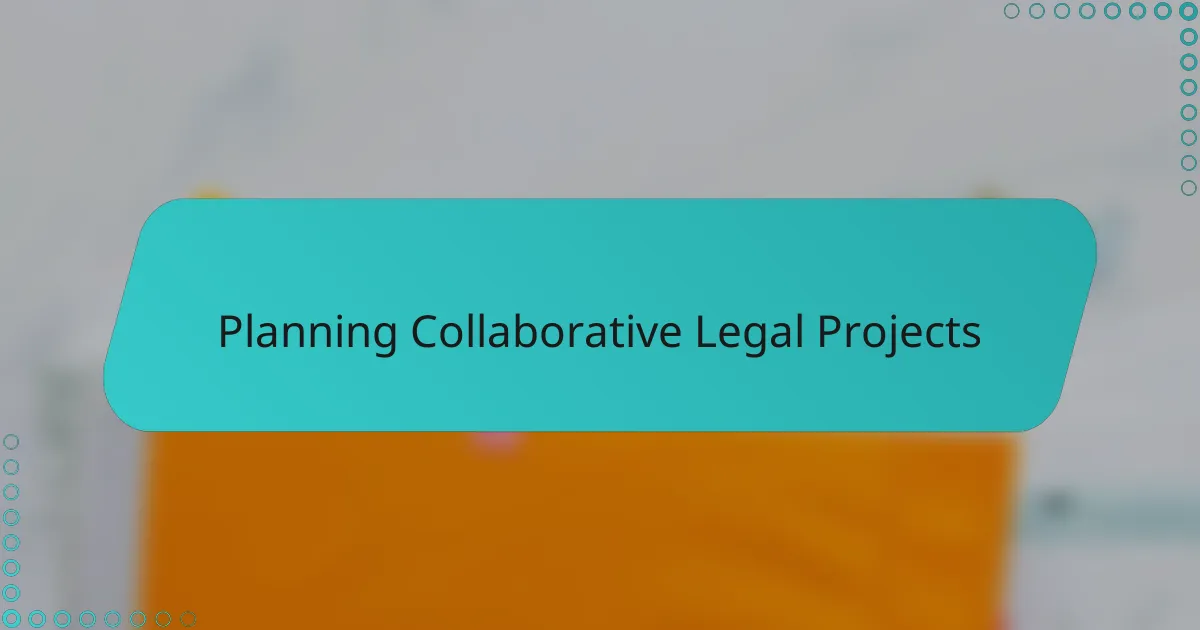
Planning Collaborative Legal Projects
Planning collaborative legal projects with the NAACP demanded more than just aligning calendars—it required a shared vision and deep trust. How do you coordinate efforts when so many voices and perspectives are involved? I found that open communication was the key; scheduling regular strategy sessions where everyone could honestly share insights and concerns helped us stay aligned.
I remember one instance when a sudden change in legislation threatened to derail our project plans. Instead of panicking, our team huddled to reassess priorities and adapt quickly. This flexibility, grounded in mutual respect, showed me that collaboration is not about rigid plans but about openness to evolving together.
Moreover, defining clear roles for each partner prevented overlap and confusion while fostering accountability. It felt empowering knowing that each person’s unique expertise was not only acknowledged but actively shaped our path toward justice. Would our impact have been as strong without this deliberate planning? From my experience, definitely not.
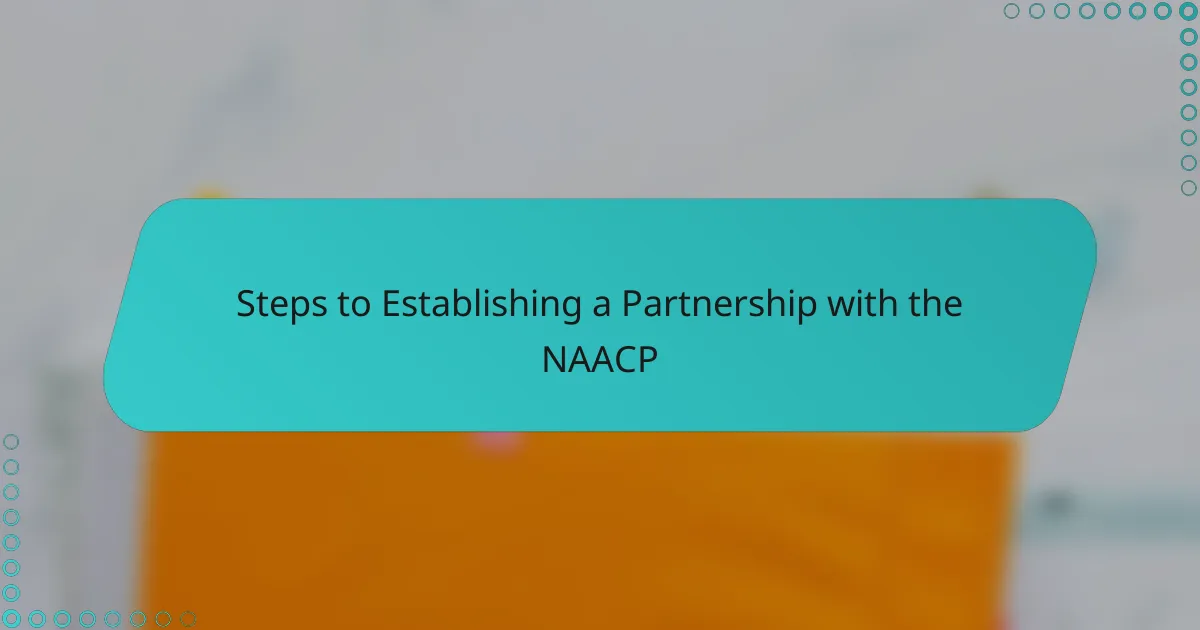
Steps to Establishing a Partnership with the NAACP
Establishing a partnership with the NAACP begins with reaching out directly to their regional or national offices, expressing your genuine interest in collaborating on legal advocacy. Have you ever hesitated to make that first call, wondering if your voice would be heard? I felt that too, but taking that initial step opened doors I never imagined.
Next, it’s crucial to immerse yourself in understanding their current priorities and ongoing campaigns. During my early conversations, I listened carefully and asked questions to ensure our goals truly aligned. This thoughtful alignment made our partnership feel less like a formality and more like a shared mission.
Finally, formalizing the relationship through clear agreements helped us set expectations and build trust. I recall feeling a mix of excitement and responsibility signing those documents, knowing that this commitment was a foundation for real impact. Without this step, collaboration risks becoming vague and ineffective—something neither side wants.
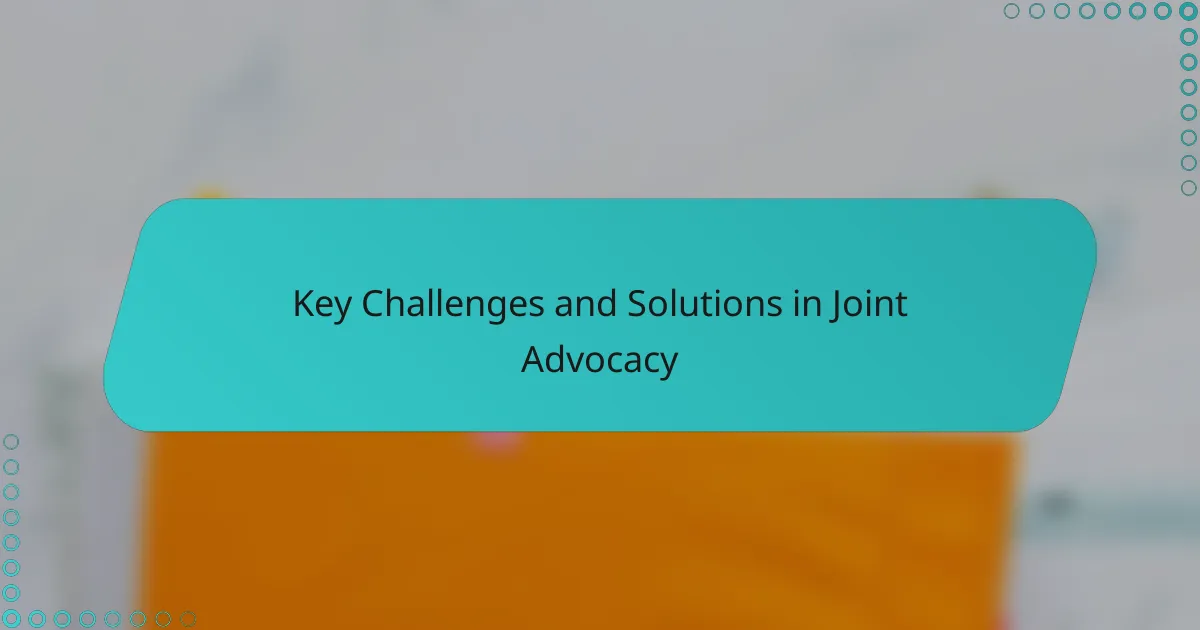
Key Challenges and Solutions in Joint Advocacy
One challenge that stood out in our joint advocacy was balancing diverse perspectives while maintaining a unified voice. Have you ever tried to merge different approaches without losing the core objective? I learned early on that active listening and creating space for honest dialogue helped us turn potential conflicts into collaborative strengths.
Another hurdle was navigating the complexity of legal systems alongside community expectations. At times, legal procedures felt slow and frustrating to those counting on swift justice. I found that transparent communication—explaining the “why” behind each step—built trust and patience among all involved, turning frustration into understanding.
Finally, sustaining momentum during setbacks tested our resilience. There were moments when progress seemed stalled, and doubt crept in. Yet, by celebrating small wins and reaffirming our shared vision, we kept the fire alive. Would we have persisted without that spirit? From my experience, probably not. It taught me how vital hope and commitment are in joint advocacy.
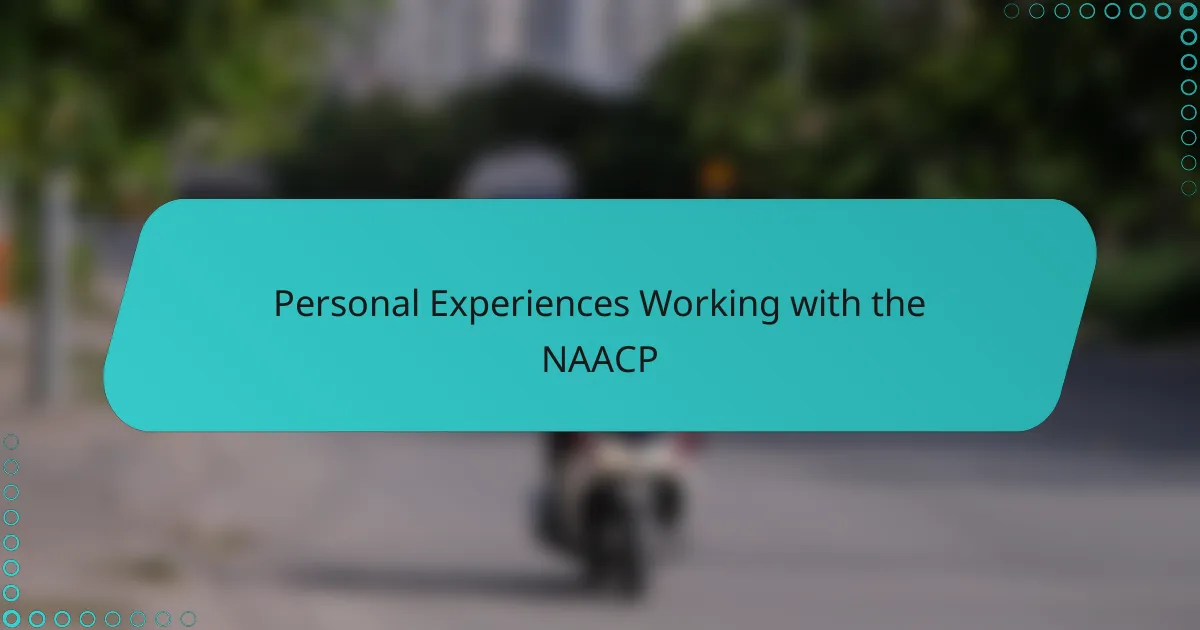
Personal Experiences Working with the NAACP
Working alongside the NAACP introduced me to a level of dedication and resolve that truly moved me. I recall one particular meeting where the passion in the room was palpable—everyone deeply committed to dismantling systemic injustice. It made me ask myself: how often do we get to work with people whose drive not only matches ours but amplifies it?
There were moments when the weight of the cases we tackled felt overwhelming. I remember feeling exhausted after long discussions, yet inspired by the stories of those we aimed to help. It was in those instances I realized how this collaboration wasn’t just legal work—it was a shared human experience demanding resilience and heart.
At times, the NAACP’s strategic approach taught me lessons I hadn’t anticipated. For example, witnessing their ability to ground legal arguments in community realities made me rethink how I framed advocacy. Have you ever noticed that when legal work connects directly to people’s lived experiences, it gains an undeniable power? That insight reshaped how I engage in advocacy to this day.
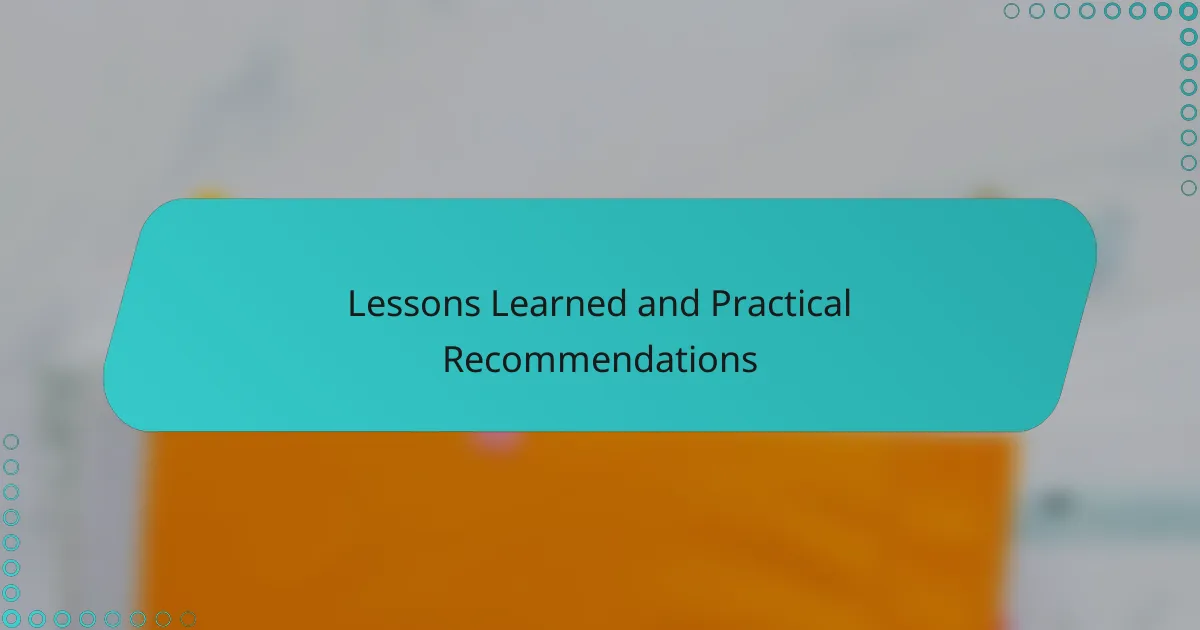
Lessons Learned and Practical Recommendations
Reflecting on my collaboration with the NAACP, one key lesson I’ve learned is the power of patience paired with perseverance. Have you ever felt eager for quick results only to realize that meaningful change often unfolds slowly? That understanding reshaped how I approach setbacks—viewing them not as failures but as opportunities to grow and strategize smarter.
Another practical takeaway is the indispensable role of clear, compassionate communication. I remember a moment when a miscommunication threatened to stall a project, and it became clear how vital it is to listen not just to respond but to truly understand. How often do we rush through conversations, missing the chance to build deeper trust? Taking time to ensure everyone feels heard made our partnership more resilient and effective.
Lastly, I discovered that aligning values early on sets the foundation for lasting impact. When our goals and principles matched those of the NAACP, our collaboration felt less like a task and more like a shared mission fueled by passion. Wouldn’t you agree that working toward justice becomes infinitely more meaningful when you believe in the cause wholeheartedly? This alignment turned every challenge into a collective victory.
